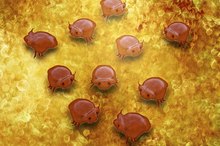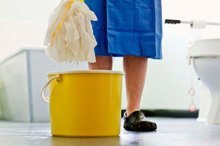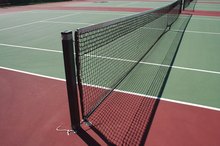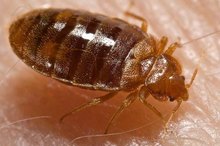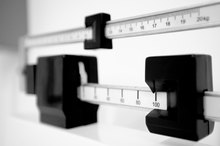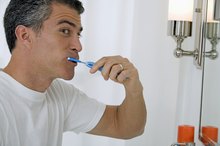How to Disinfect Herpes or Shingles Virus
Herpes zoster, or shingles, can be contagious to people who have not had chicken pox. Until shingles vesicles are crusted over, the virus can be spread to others. During infection, herpes zoster blisters are exposed on the skin surface and might come into contact with surrounding surface areas. Disinfection by definition means a reduction in the number of microorganisms to a level below that which can cause disease. Common household products like chlorine bleach can be used to attain this level of decontamination on surfaces.
If you are experiencing serious medical symptoms, seek emergency treatment immediately.
Wipe up any obvious organic matter such as blood, sweat or vomit. Wear gloves and use a separate cloth or disposable paper towels to wipe up the organic matter. Use a fresh cloth to disinfect those areas with fresh bleach solution consisting of ¼ cup of chlorine bleach in1 gallon of water. The presence of organic matter can slow down the intended activity of disinfectants. Dip the cloth into the solution, gently wring it out, and wipe down the surface using one-way strokes. Continue across the surface in this manner, making sure that the solution wets the surface. Let the area dry, and then re-apply bleach solution using a new cloth. Allow to air dry.
How to Sterilize Against Pinworm Eggs
Learn More
Clean and disinfect all surface areas and countertops in your environment with household bleach diluted in a ratio of ¼ cup of liquid chlorine bleach to 1 gallon of water. Include bathroom tubs, sinks and toilet seats. Wipe all surface areas, and allow to air dry. Do this on a daily basis until all blisters have crusted over and the shingles infection is cleared.
Clean sports facilities that are in common use, such as locker rooms and shower areas. Wash gym mats after each session of use. Wash down bicycle handles and weight equipment where it commonly comes into contact with hands or other body parts. Use a cleaning cloth to wash all items. Prepare a solution of ¼ cup chlorine bleach to 1 gallon of water.
Common Human Parasites
Learn More
Mop all floors using a bleach solution of ¼ cup bleach to 1 gallon of water. Mop heads should be laundered after each use, using regular laundry detergent and a hot water setting. Dry in an automatic dryer using high heat.
Wash all cleaning cloths using regular laundry detergent in hot water. Dry in the clothes dryer on high heat.
Launder all clothing and bedding daily. Add chlorine bleach to the wash, and use a high temperature setting. Dry using high heat.
Wash your hands with soap and water frequently.
Warnings
Always wear rubber gloves when disinfecting surfaces with chlorine bleach.
Related Articles
References
- Benzoni T, Hatcher JD. Bleach Toxicity. In: StatPearls [Internet]. 2019.
- Center for Disease Control and Prevention. Cleaning and sanitizing with bleach after an emergency. Health and Safety Concerns for All Disasters. 2017.
- Centers for Disease Control and Prevention. Infection Control: Chemical disinfectants. Updated September 18, 2016.
- Centers for Disease Control and Prevention. Cleaning and Sanitizing With Bleach After an Emergency.
- E. Rhinehart, M. Friedman, and M. McGoldrick. Infection Control in Home Care and Hospice. 2006. Association for Professionals in Infection Control and Epidemiology. Jones and Bartlett Publishers.
Warnings
- Always wear rubber gloves when disinfecting surfaces with chlorine bleach.
Writer Bio
Erin Moseley is an advocate for science education. Since 1985, she has written numerous technical, user and training manuals for major corporations, public agencies and universities. She holds a Bachelor of Science in geology.

